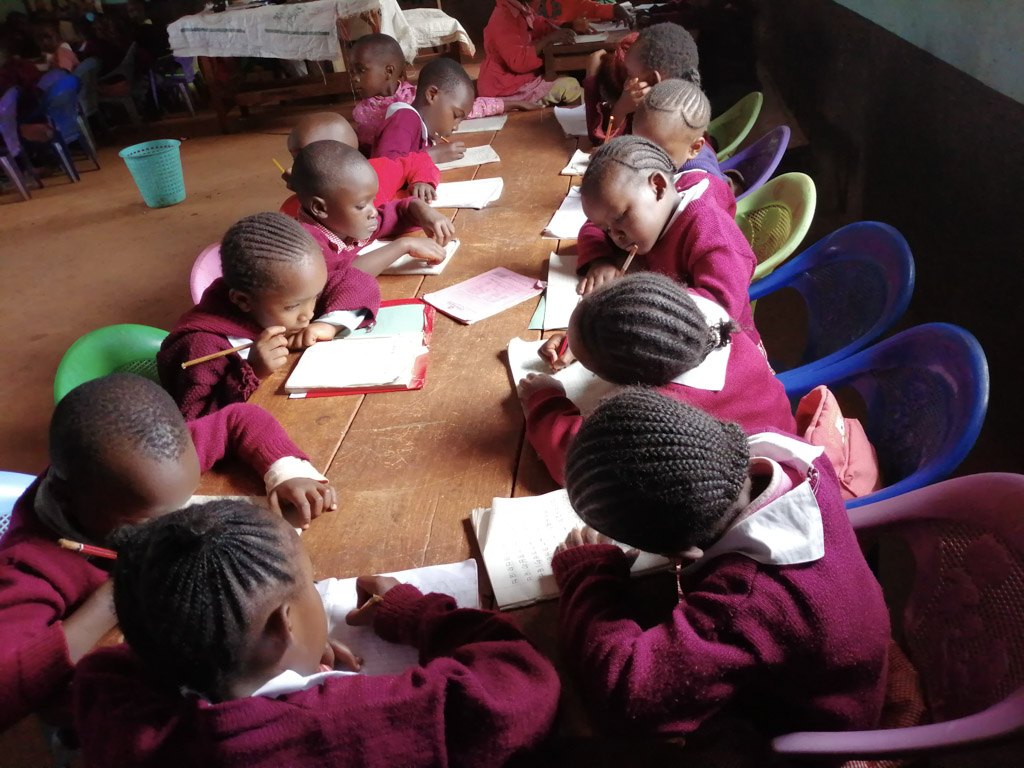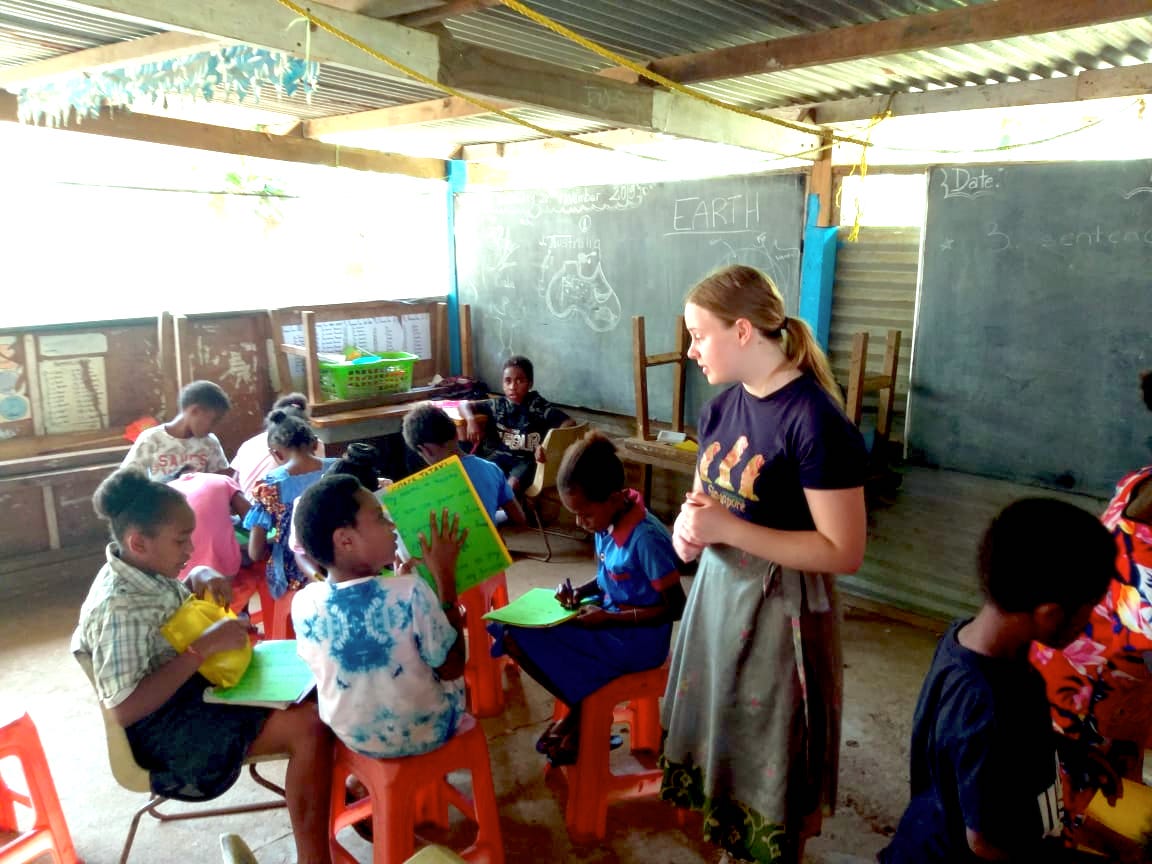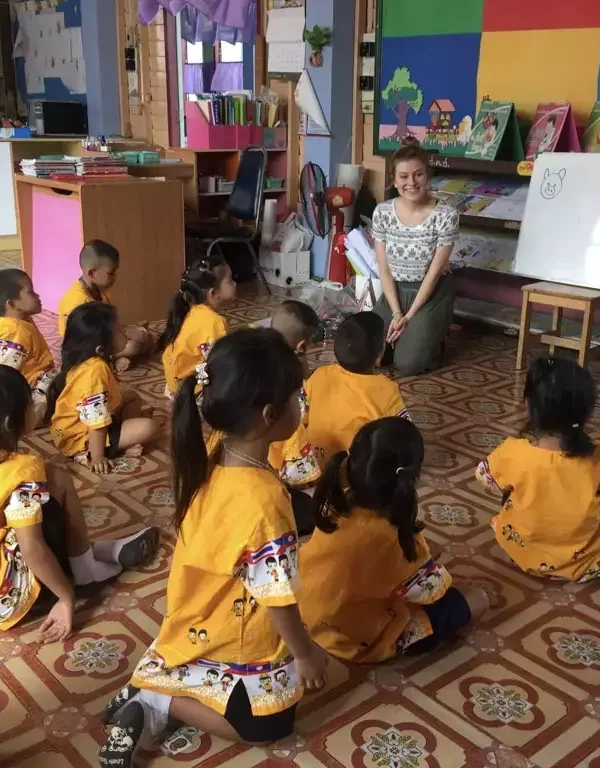So, you’ve booked a project teaching overseas but have no idea where to start?! This post will outline a few lesson plan ideas for teaching abroad, and hopefully give you a little confidence for the classroom.
First of all, give yourself a pat on the back. Booking a volunteer trip abroad, whether you are already a teacher or not, can be a daunting prospect. But you are being brave and taking a leap of faith! Well done you! Volunteering abroad can certainly come with its challenges, but the rewards are much greater. IVI have awesome teaching opportunities in every country! Why not try teaching in primary schools in Thailand, or in a kindergarten in Bali, and for a real challenge, on a remote island in Fiji!
For those who are already teachers, you may already be quite adept at creating a great lesson plan, but remember, the children on the projects will not have English as their native language, so you may need to simplify your lesson plan and teaching games.
For those of you who have never taught before, you will likely be feeling a little apprehensive about standing in front of a class full of children. Don’t worry, they are usually eager to learn and happy for you to be there. You will also likely be with another volunteer, which can help too.
Remember that kids are kids and can get distracted and switch off if the lesson is not engaging. That’s why a lesson plan is so helpful! Kids will keep their attention if they are engaged in an activity, and it is fun. If the lesson is boring, or the work too easy or hard for them, they will become disinterested. This is also true for adults.
It is a good idea to see if a handover book has been left by previous volunteers, about what they were teaching the children. Also talk to the local teachers and co-ordinators, who will be able to give some insight into what the students already know. Sometimes you may not have much information to go with, but by having some lesson plans already thought out, you will be much better prepared.
So, what is a lesson plan?
A lesson plan is, well, exactly what it says, a plan for the lesson. It is created and used by the teacher, as a guide for what will be taught, the lesson objectives, activities, an evaluation of how the lesson went, and any feedback or ideas to take through to the following lesson.
This can be as detailed as you like, all teachers will vary on how much they like to prepare and jot down before the lesson begins. Remember that whilst the lesson plan is great as a guide, you do not need to stick to it by the rule book! If you have assigned 10 minutes for an activity but the class is super engaged, then let them continue with this for a bit longer. If something is not working, then you may need to adapt the plan in the middle of the lesson.
Keep in mind, a worksheet, or an idea for an activity for the classroom, is not a lesson plan. The lesson plan is used as a guide, to keep you on track, note your aims for the class and to evaluate the lesson and the progress of the students.
Do I really need to do a lesson plan for every class?
Whilst this is an individual decision, it is recommended that a lesson plan is created before every class. This will help both yourself and your students, as the lesson will have a clear objective and the students will exactly know what it is they will be learning that lesson, and what they need to achieve.
Even just a basic lesson plan of the objective, activities for the students (and how long they will take on each task), and a quick evaluation of how the lesson went, will help you to adapt any further lessons and judge where the students are at with their ability.
To quote Benjamin Franklin, “If you fail to plan, you are planning to fail!”. Keep this quote in mind when you are teaching overseas because it is so true! Preparation is key and the more prepared you are in your lesson plan, the more confident you will feel standing in front of a full class.
How do I create a lesson plan?
The lesson plan is usually defined by several sections which include:
- Objectives
- Materials
- Introduction
- Activities
- Assessment
- Evaluation
Lesson objectives
The first thing to do when creating a lesson plan, is to figure out what it is you want to teach and what the objectives are. There should always be an outcome you wish to see after the lesson, what do you want your students to come away with?
Examples of lesson plan objectives
- Students will learn to write down the days of the week
- Practice speaking greetings in English
- Be able to write down basic sentences in the past tense
- Create a basic letter in Microsoft Word
- Read and speak classroom objects from flashcards
Although this may appear challenging at first, to know whether your students will be able to learn what it is you want them to, you will soon get a feel of their general ability and what they know already.
Remember to consider the students ages and abilities within the class. It is not uncommon for teaching overseas placements to have kids of multiple ages and skill levels in one class. Have some different activities and objectives for the younger/ lower ability students, and some extensions for those students who finish early or need a bit more of a challenge.
Make sure the objective can be easily measured and is attainable for the students. Do you have enough time to cover it in one lesson, or will it need to be split over two or more lessons?
Materials needed
When teaching overseas, and especially to kids, you will want some interesting visuals for your lessons. You will likely need stuff for each lesson, so it’s a good idea to jot these things down, so you don’t forget.
Materials you may need for your lesson:
- Paints
- Colouring pencils
- Stickers
- Flashcards
- Laptop/ computer
- Textbooks
- Pens/ pencils
- Rubbers
- Worksheets
- Calculator
Introduction
Every lesson plan should start with an introduction of some sort. This doesn’t have to be too long and complicated, just a short 5-10 minutes of a warm-up exercise, or to introduce the students to what they will be learning that lesson.
The introduction should be something fun, that gets students in the mood for learning.
Warm up ideas for kids:
- Sing the days of the week, or another song your students love, ‘heads, shoulders, knees, and toes’ is a popular one!
- Show flashcards and get the students to shout out what the picture is, gradually get faster and faster, so they have to answer quickly!
- Write a sentence on the board but jumble up the words. The students can either come up one by one to figure it out, or you can give them cards with the individual words, and they can work on putting the sentence back together in groups. Make it more competitive by telling them the first group to get the sentence right will get a sticker. Keep it simple for young kids. This will also work with adults.
- Simon Says. A popular childhood game you properly remember from school or birthday parties. The kids love it!
Warm up ideas for adults:
- Hangman. A popular game that works for kids as well. If you do not know the rules, or need a reminder, this simple video explains.
- Put up a picture on the board and have the students describe what they see. This could be using adjectives, describing the objects in the picture, where the objects are (the box is under the table), the colours they see, are there any people in the image, what are they doing? This can be used as a speaking or written exercise.
- Write a long word on the board and get students to either speak or write any other words they can make using those letters.
Activities
This section will be the most detailed part of your lesson plan. This is where you will write down all the activities you plan to do with the class, and how long you expect the students to work on each one.
You might spend some time introducing a new subject or refreshing something from the previous lesson. Decide whether you will focus on speaking, reading, writing, or listening, or a combination of those.
Think of some games to play or create a worksheet for the students to fill in or have them read from their class textbook. It might be best to have a few things in mind, and keep one as a backup, in case the lesson is falling flat. Will the students be working in groups or individually?
At the end of the class, you may want to wrap up what the students have learn in the lesson with a closing activity. This could be as simple as getting the students in a circle and having them throw a ball to each other. The student with the ball asks a question and throws the ball to another student, who then answers the question and thinks of another one, before throwing the ball to the next student, and so on. This a great exercise to see if they have taken everything in or still need some help.
Assessment
To assess if the lesson plan was successful and the objectives have been met, it’s a good idea to perform some kind of test. This doesn’t need to be too complicated; it could just be a few questions at the end, or you could set some more detailed homework for your students to complete on their own.
Write down any questions you will ask your students. You could ask them as a whole class or get them to write down in their workbook. This could be a written test at the end of class, or a speaking test. Or you could get the students into groups to present what they have learnt in class.
The assessment should be designed to test whether the lesson objective has been met. For example, if your lesson plan objective was for the students to learn basic colures, your assessment may be to go around the class with flashcards of assorted colours, and have students read what colour they see. Or they could write down the colours as part of a written assessment.
Reflection
This is where you will write down what worked, and what did not work in your lesson. Perhaps the students really enjoyed a written activity but were very shy when it came to speaking in front of the class. You may choose to repeat the activity that was successful in another class, and also work on the student’s confidence with public speaking.
Things to think about when reflecting on a class:
- Were the students engaged? Which activities kept their attention?
- Did any students misbehave? Could an activity be made more interesting?
- Did they find the work really easy or too hard and ask a lot of questions?
- Was the lesson timing ok, did anything take longer than expected?
- Could any activity be improved?
You won’t get it right every time and that’s ok. We learn from our mistakes. But by looking at the things that did not go so well, we can improve for next time. Sometimes it is about trial and error and to see what works with your students.
So, now you know how to create a lesson plan, its time to read up on some fun TEFL or ESL activities and games for the classroom.
Don’t forget to download and print your lesson plan template! It may be best to print off a few before home, or check whether there is local shop in the destination you have chosen, where you can photocopy and print.
 Involvement Volunteers International
Involvement Volunteers International 


